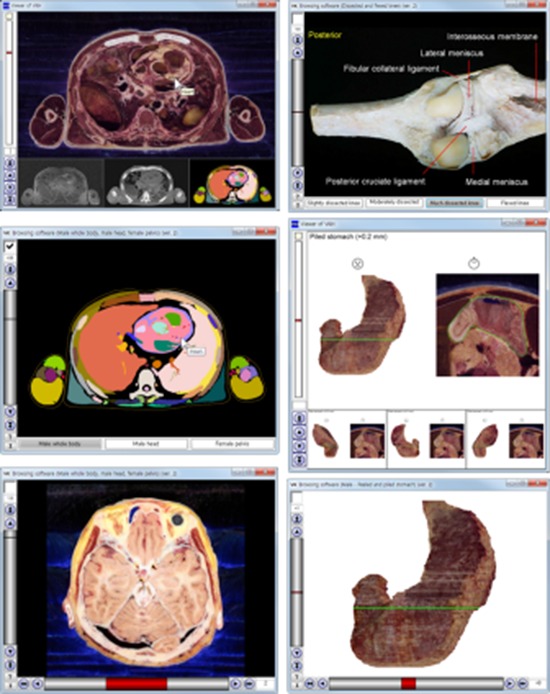- Record: found
- Abstract: found
- Article: found
Improved Software to Browse the Serial Medical Images for Learning

Read this article at
Abstract
The thousands of serial images used for medical pedagogy cannot be included in a printed book; they also cannot be efficiently handled by ordinary image viewer software. The purpose of this study was to provide browsing software to grasp serial medical images efficiently. The primary function of the newly programmed software was to select images using 3 types of interfaces: buttons or a horizontal scroll bar, a vertical scroll bar, and a checkbox. The secondary function was to show the names of the structures that had been outlined on the images. To confirm the functions of the software, 3 different types of image data of cadavers (sectioned and outlined images, volume models of the stomach, and photos of the dissected knees) were inputted. The browsing software was downloadable for free from the homepage (anatomy.co.kr) and available off-line. The data sets provided could be replaced by any developers for their educational achievements. We anticipate that the software will contribute to medical education by allowing users to browse a variety of images.
Graphical Abstract

Related collections
Most cited references15
- Record: found
- Abstract: found
- Article: not found
Stereotaxic display of brain lesions.
- Record: found
- Abstract: found
- Article: not found